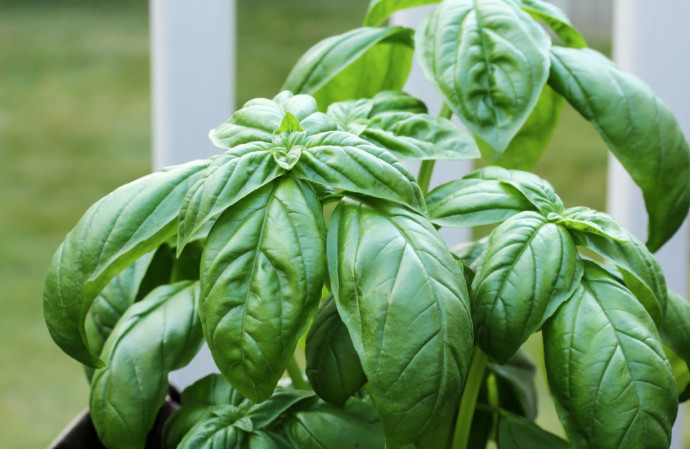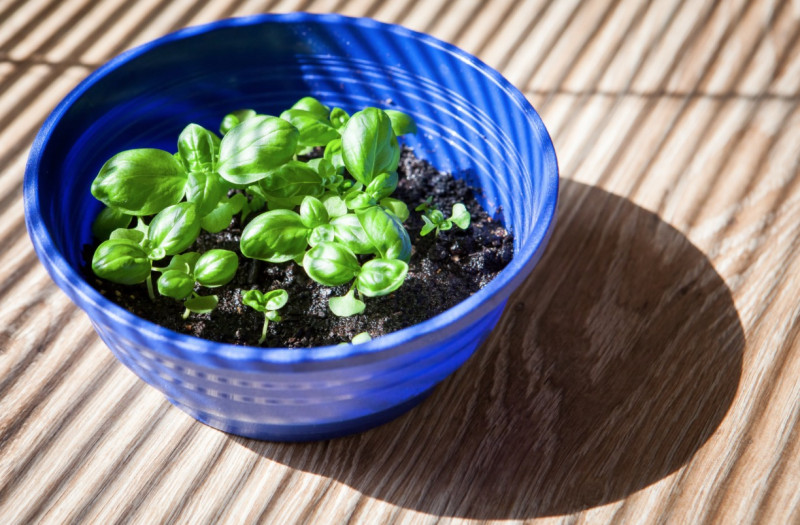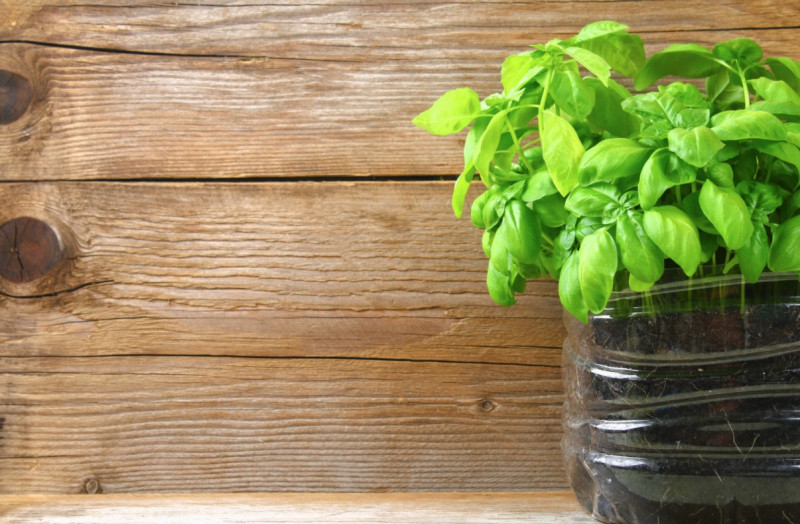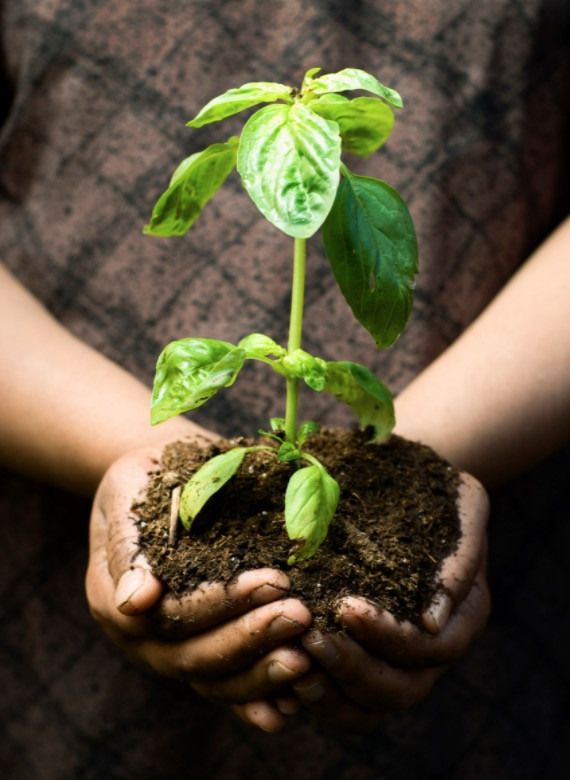Basil Care Tips

Basil plants are one of the most popular herbs to grow and also one of the easiest. Sweet basil (Ocimum basilicum) is a member of the mint family. It is closely identified with Italian cooking, although it is originally from India. The extremely aromatic leaves also have a delightful variety of flavors, from the slightly lemony-mint of sweet basil to cinnamon and licorice. Leaf colors span from rich green to deep purple, with smooth or crinkled leaves. The flowers are insignificant but very popular with bees. A little care is needed to enjoy the aromatic delights of home-grown basil. Discover the ultimate guide to take care for your basil plant.

This herb needs heat to germinate and grow. Make early sowings in a propagator or on a sunny windowsill and keep the young plants warm, too.
Sow into individual pots or modules of well-drained seed compost, about three seeds in each, and take care not to overwater them. Let all the germinating seedlings grow on to make bushy transplants quickly. Basil will only flourish outside in a warm, sunny sheltered spot with well-drained soil. It often does better in containers, where it is easier to prevent waterlogging and protect the plants from slugs and the weather. Alternatively, plant basil in a greenhouse border, but make sure it gets good light and air rather than being squeezed in between tomato plants.
Planting Basil
- To plant outside, wait until the soil has warmed to at least 50°F (10°C)—preferably around 70ºF (21°C) for best growth. Nighttime temperatures shouldn’t drop below 50°F (10°C).
- Don’t rush basil. Without heat, the plant won’t grow well.
- Choose the Perfect Spot
- Basil will grow best in a location that gets 6 to 8 hours of full sun daily, though it can perform well in partial sun, too.
- Soil should be moist but well-drained.
- Basil works great in containers or raised beds, as these allow for better drainage.
- If you’re planning on cooking with these plants, plant in clean soil, don’t use insecticides, and grow them away from driveways and busy streets so that exhaust won’t settle on the plants.

Planting Rules
Plant seeds/seedlings about ¼-inch deep and 10 to 12 inches apart. They should grow to about 12 to 24 inches in height.
For larger varieties, plant farther apart (about 16 to 24 inches).
Tomatoes make great neighbors for basil plants in the garden—and on the plate!
Make sure that the soil is moist. Basil plants like moisture.
If you live in a hot area, use mulch around the plants (the mulch will help hold in moisture and suppress weeds).
During the dry periods in summer, water the plants freely.
After the seedlings have produced their first six leaves, prune to above the second set. This encourages the plants to start branching, resulting in more leaves for harvest.
Every time a branch has six to eight leaves, repeat pruning the branches back to their first set of leaves.
After about 6 weeks, pinch off the center shoot to prevent early flowering. If flowers do grow, just cut them off.
If the weather is going to be cold or if a sudden frost is imminent, be sure to harvest your basil beforehand, as the cold temperatures will destroy your plants.
A good supply of nutrients is also essential: well-composted soil for plants in the ground and, for plants in containers, a top dressing of organic chicken manure pellets or a high nitrogen liquid feed. Harvest young shoots regularly to prevent the plants flowering and encourage new healthy growth; the young leaves have the best flavor. In theory, spring-sown plants should give harvests all summer, but with this fussy herb you can’t be sure. I usually make a second sowing of basil in June, just in case. Autumn frosts will kill the plants but cool, damp conditions usually get to them first, causing the stems to rot and wilt.

How to Harvest Basil
Start picking the leaves of basil as soon as the plants are 6 to 8 inches tall.
Once temperatures hit 80°F (27°C), basil will really start leafing out.
Harvest in the early morning, when leaves are at their juiciest.
Make sure to pick the leaves regularly to encourage growth throughout the summer.
Even if you don’t need to leaves, pick them to keep the plant going. Store them for later use!
If you pick regularly, twelve basil plants can produce 4 to 6 cups of leaves per week.
How To Store Basil
The best way to preserve basil is to freeze fresh young shoots in plastic bags. Crushed into soups or sauces, they bring their summery flavor to cold winter days. Freezing will prevent the plant from losing a good portion of its flavor. To quick-freeze basil, package whole or chopped leaves in airtight, resealable plastic bags, then place in the freezer.
Another storage method is drying the basil (although some of the flavor will be lost). Pinch off the leaves at the stem and place them in a well-ventilated and shady area. After 3 to 4 days, if the plants are not completely dry, place them in the oven on the lowest heat setting with the door slightly open. Remember to turn the leaves (for equal drying) and check them frequently.

Interesting info about the basils. I wanted to sign up for your site, tried a couple of times only to get the message «Get plant information, gardening solutions, design inspiration and more in our daily newsletter.
SIGN UP»
Mailing list including